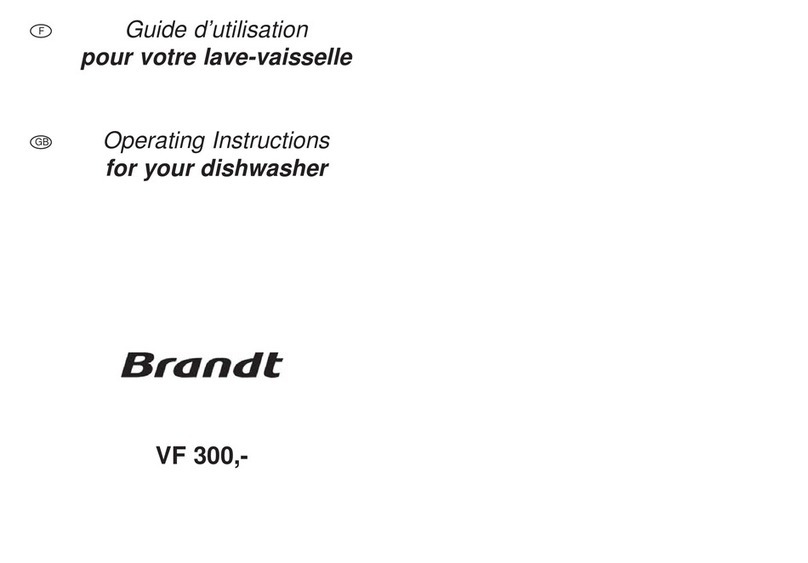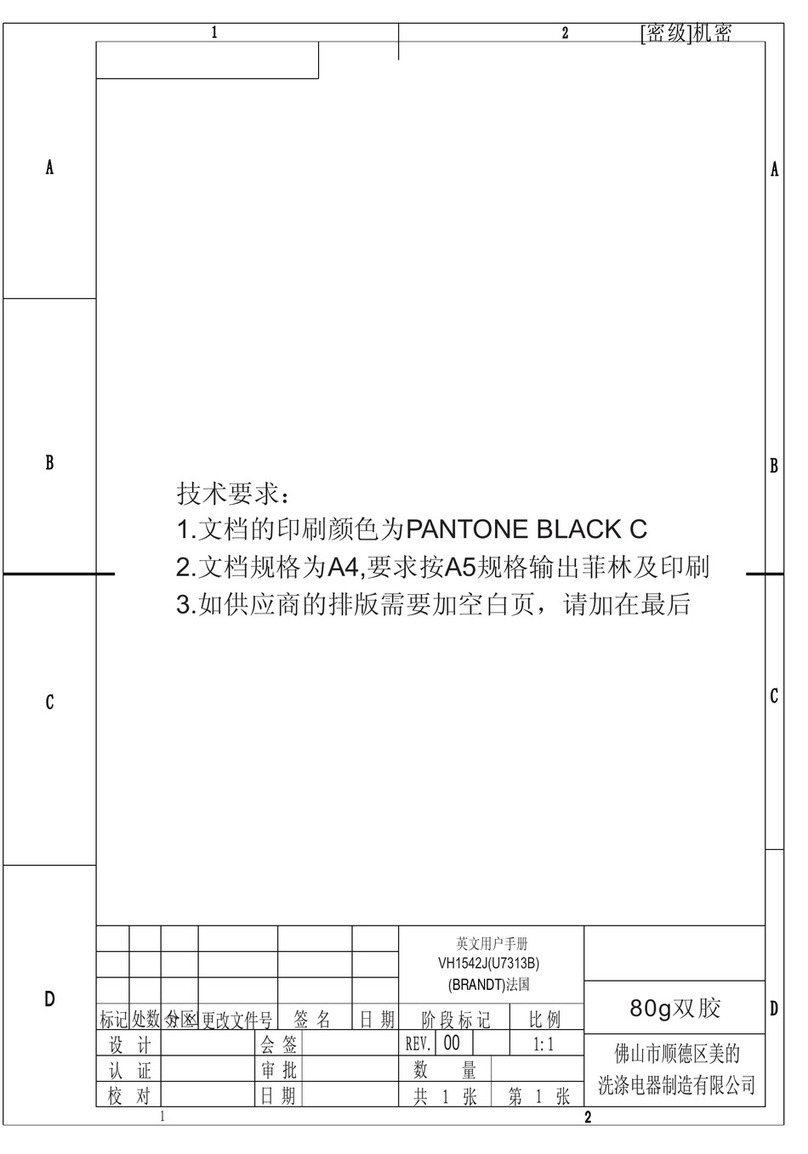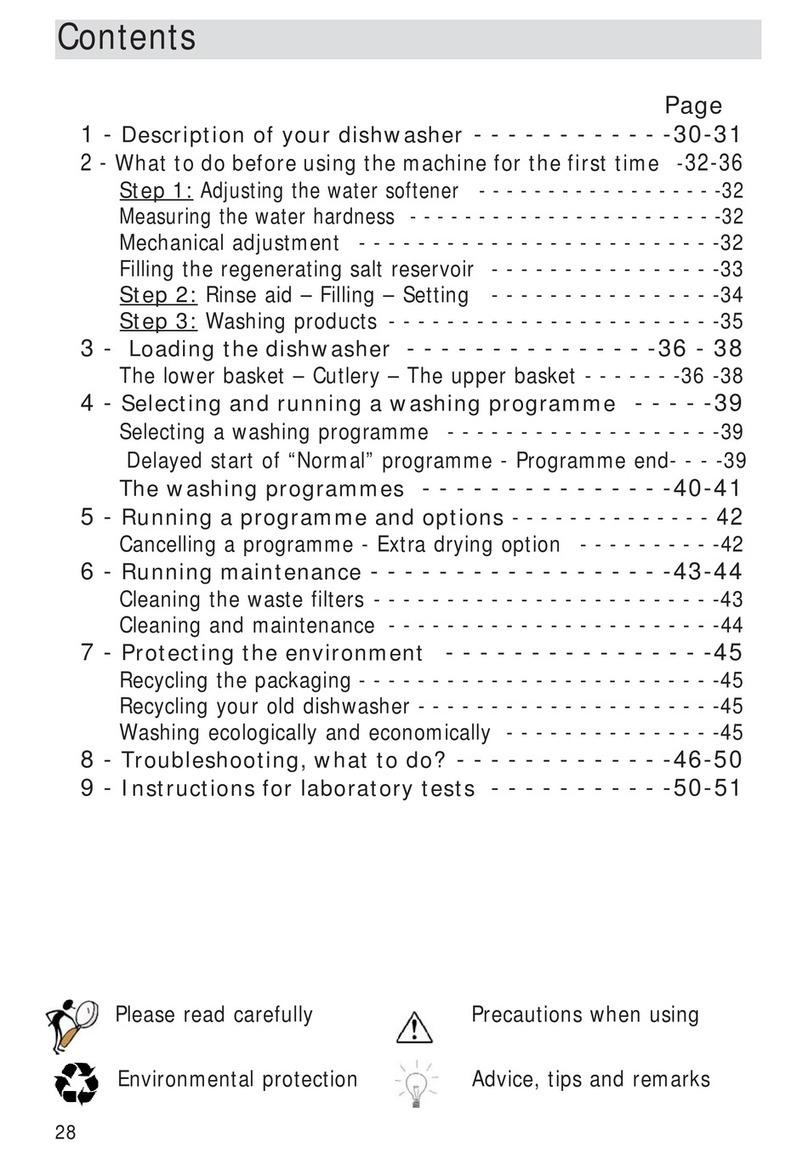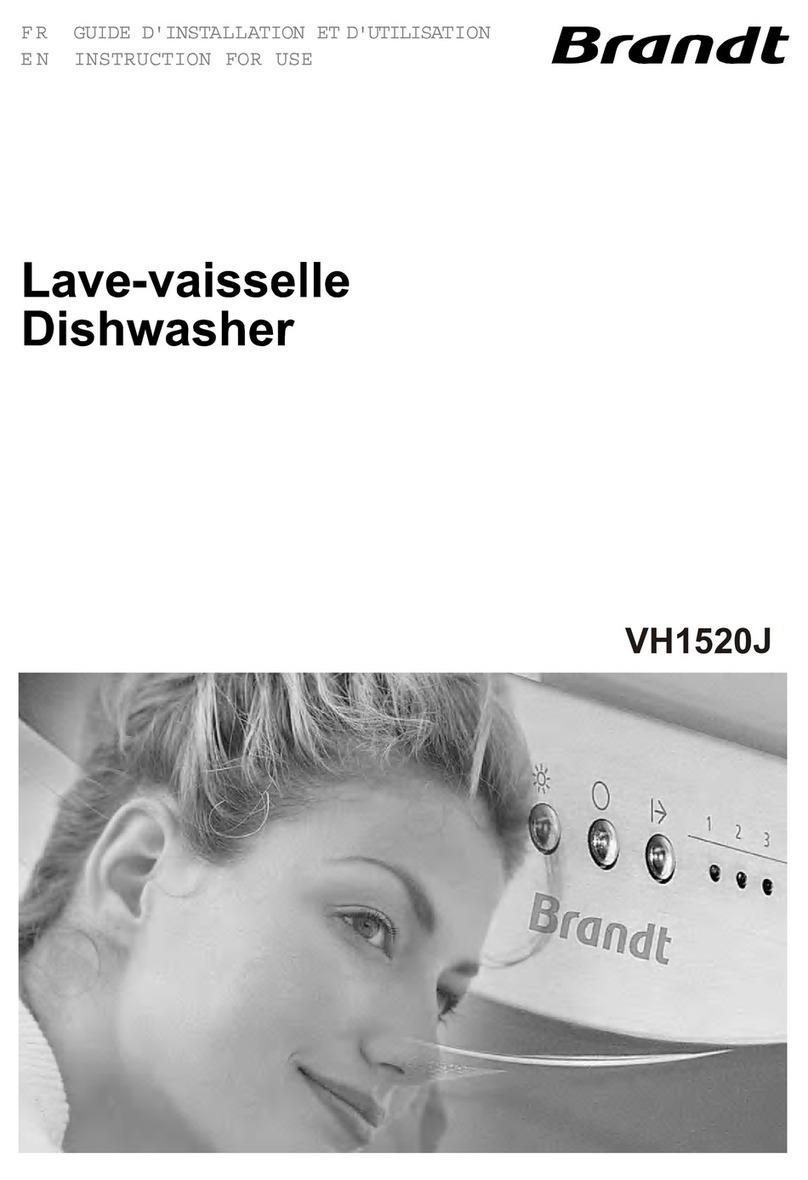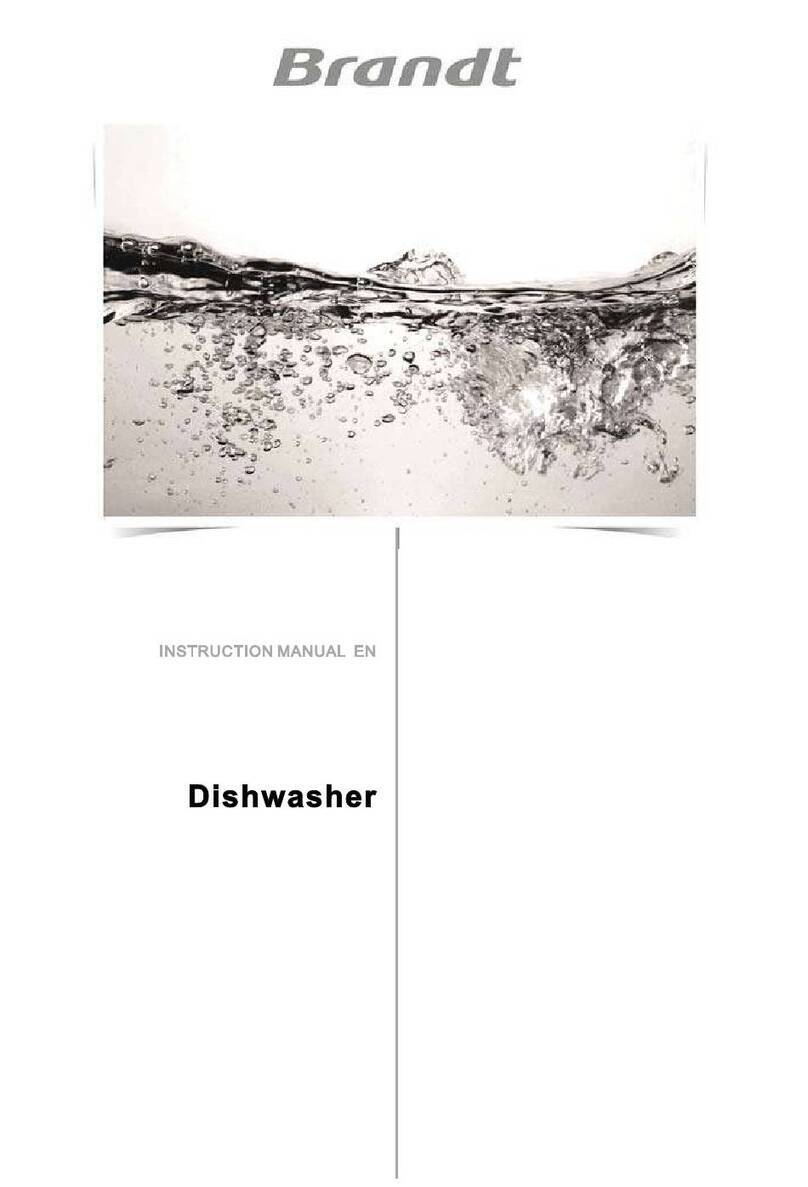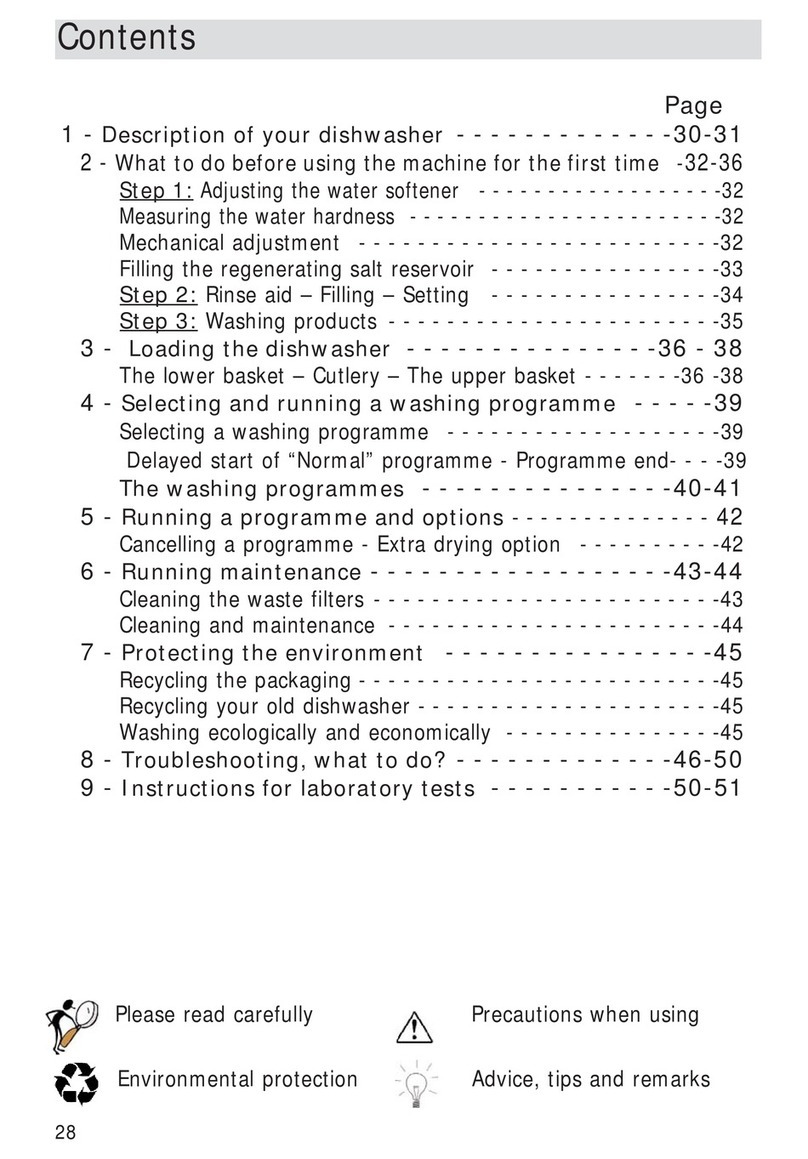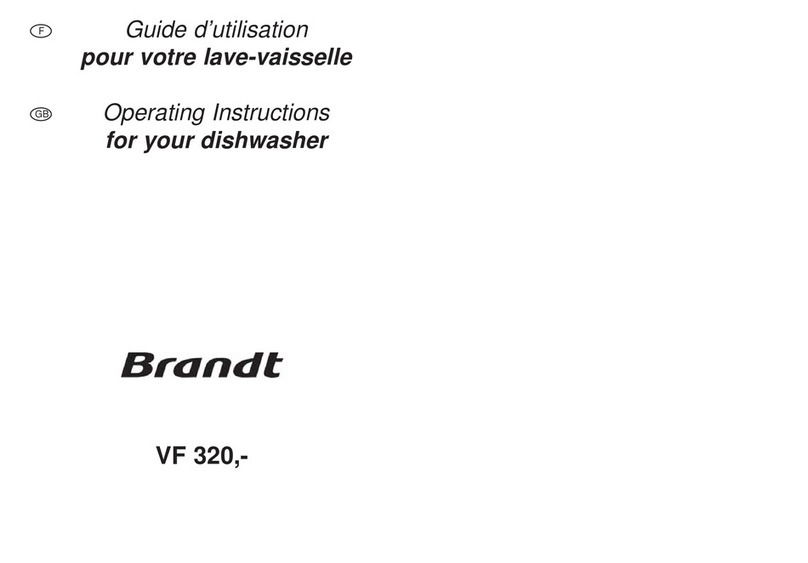
cleaning..............................16
Programme.....................................15
able..............................................14
Dishwasher Basket.......................12
time...............................
To review the section on troubleshooting Tips
will help youto solve somecommon problems
by yourself .
NOTE:
Dear Customer,
Please carefully read this manualbefore using the
dishwasher, itwill help youto use and maintain the
dishwasher properly.
Pass it on to any subsequent ownerof the appliance.
This manual containssections on safetyInstructions,
Operating Instructions, Installation Instructions and
Troubleshooting Tips, etc.
Read this Manual
Before Calling for Service
Keep it asa refer inthe later days.
If you can not solve the problems by yourself ,
please ask forthe help ofprofessional technicians.
Dishwasher Features...........................................
4) Prior usingfor the first
A Water Softener..............................................
5) Loading the
Attention before orafter loading theDishwasher
Baskets........................................................... 12
7) Maintenance and
Filtering System................................................16
Caring forthe Dishwasher..................................17
B Loading the Salt into the Softener.....................8
C Fill the RinseAid Dispenser..............................8
D Function of Detergent ....................................9
Loading the upperBasket....................................13
Loading theLower Basket...................................13
6) Starting awashing programme........................14
Wash CycleT
Turning onthe Appliance....................................14
Change the
At theend of the Wash Cycle..............................15
8) Installation instruction...................... ..............
9) TroubleshootingTips......................................21
Before callingfor service.....................................21
Error codes.......................................................22
Technicalinformation..........................................23
1) Safety Information..........................................1
3) Operation Instructions.................................
Control Panel.......................................................
.................................. 18
.......................................18
.............................................. 19
......................................... 20
Loading thebaskets
2) Quick operation guide.....................................
If lost or out-of-date, you can receive a new user
manual from the manufacturer or responsible vendor.
The manufacturer, following a policy of constant
development and updating of the product, may
make modifications without giving prior notice.
555
6
6
6
7
7
18
Positioning the Appliance
About power connection
Water Connection
Start of Dishwasher
8) Installation instruction
1) Safety Information..........................................1
2) Quick operation guide.....................................
3) Operation Instructions....................................
6
time...............................4) Prior usingfor the first
7
Dishwasher Basket.......................125) Loading the
6) Starting awashing programme........................14
cleaning..............................167) Maintenance and
9) TroubleshootingTips......................................21
Loading thebaskets
